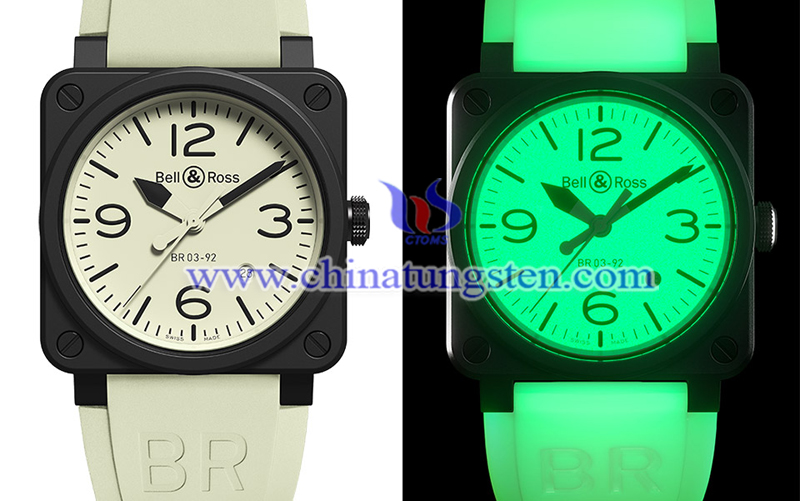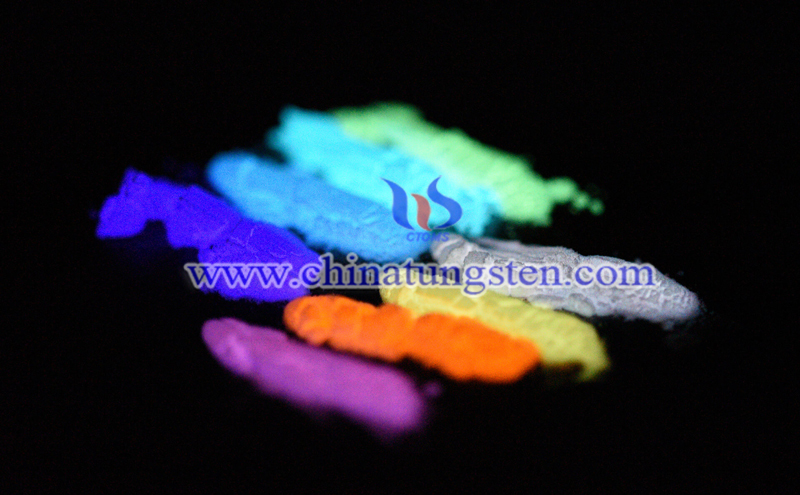From Radium to Rare Earth: Luminous Watch Evolution
- Details
- Category: Tungsten's News
- Published on Tuesday, 11 February 2020 20:14
Bell & Ross launched a BR03-92 Full Lum rare earth luminous watch, and some people indicate that the luminous light is harmful to the human body, while others asked: is there radiation? To answer this, we should track back to the time after the radium was discovered.
Luminous watches emit light due to its luminous materials and activators, the luminous materials have changed a lot over time. The earliest pocket watches rarely had a luminous configuration, which is one of the reasons why the first questioning of the watch was to know the time in the dark night. Because of the necessity of luminous to soldiers. Not only can time be seen at night, but it is also good for lurking.

The earliest light watch was radium luminescence, which was about 1910, 20 years after the element was discovered. The element is radioactive that can emit two kinds of rays, α and γ. After a certain synthesis, it can produce self-luminescence with a certain brightness, which is more suitable as a noctilucent material for close observation. So, this is the birth of the watch. The luminous watch in this period is harmful to the human body.
After the 1950s, global chemical and industrial research institutions gradually restricted the use of radium to general fields. With the popularity of the watches, the watch industry began to use Tritium - triple hydrogen as a luminous material. Tritium is an isotope of hydrogen. Like radium, it is a radioactive material, but its radioactivity is much smaller, and it is also much safer.
Since the 1980s, plastic case watches are not suitable for painting with rhenium paint. Major brands have gradually reduced the use of Tritium. But the luminous watch's popular trend is unchanged. "Tritium Gas Vial" was adopted by the US military watch as a standard specification in 1989. In 1991, the gas watch was formally assembled by the US military and was widely used in the first Gulf War.
Since the 1990s, with the development of science and technology, there has been no radiation luminous, which called Luminova. It is a new type of long afterglow light-storing rare earth-based alkaline fluorescent material, which is environmentally friendly. It was first developed by Japan's radical special chemical group in the 1980s. It is different from traditional noctilucent materials, it does not contain any harmful elements, it holds more stable chemical properties, high brightness and long afterglow time. Luminova can add a variety of colors, such as pink, blue, yellow, red, etc., to create a colorful luminous effect.

Another evolved product is called Super-LumiNova. This material appeared in the 1980s. Its main component is strontium aluminate salt. After adding dysprosium rare earth element, as long as it is exposed to light for several minutes, it can continue to emit light for hours. "Sandwich-type" dial luminous based on Super-LumiNova to display the hands and digital scales have been made. Many diving watches also use this luminous light, such as Rolex water ghost, Omega seahorse and so on.
Most watch brands have now popularized rare earth made Super-LumiNova, which is harmless to the human body. And from the above, Radium luminous watch is no longer in the market, as the harm, we don't have to "think too much".
- Rare Earth Manufacturer & Supplier, Chinatungsten Online: www.chinatungsten.com
- Tungsten News & Prices of China Tungsten Industry Association: www.ctia.com.cn
- Molybdenum News & Price: news.molybdenum.com.cn
- Tel.: 86 592 5129696; Fax: 86 592 5129797; Email: sales@chinatungsten.com



 sales@chinatungsten.com
sales@chinatungsten.com